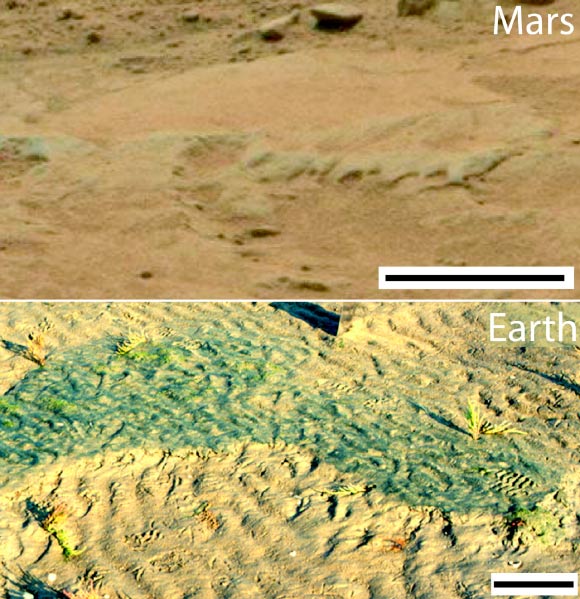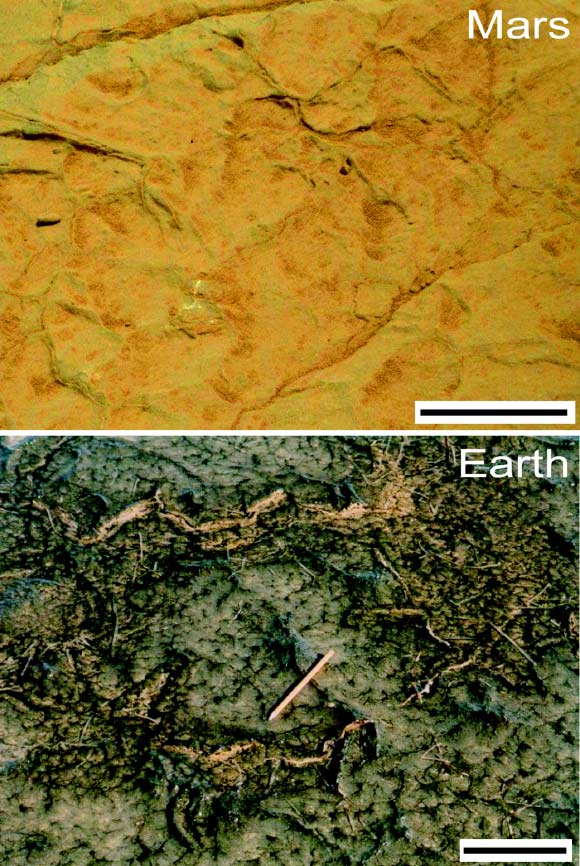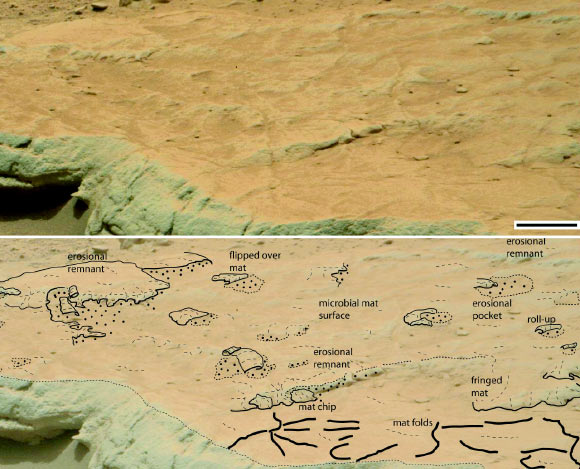Dr Nora Noffke of Old Dominion University in Norfolk, VA, says she has found potential evidence of former life in photos taken by NASA’s Mars rover Curiosity.
Dr Noffke’s study, published in the journal Astrobiology, compares about a dozen photos taken by the Curiosity with photos of microbially induced sedimentary structures (MISS) on Earth.
“The similarities are remarkable,” Dr Noffke said.
“Although Mars today is much colder than Earth and seems only to have water in ice and vapor forms, scientists believe that it must have been a very different place 3.7 billion years ago – warmer, wetter and with a much thicker atmosphere.”
“Why the climate then was more hospitable to life is puzzling, but this could have been caused by volcanoes, orbital changes or large asteroid impacts.”
Whatever may have caused the life-allowing conditions, Dr Noffke said that photographs from Curiosity clearly show sediment deposits resembling those she has found in modern salty settings at Portsmouth Island, N.C., and Bahar Alouane, Tunisia; in playa lake sediments cropping out of the Mediterranean coast in Tunisia; and in Archean salt deposits of the Pongola Supergroup in South Africa and the Dresser Formation in Australia.

Top: a rock bed at the Gillespie Lake outcrop on Mars. Bottom: close-up of an erosional remnant of a modern sediment surface, Mellum Island, Germany. Scale bars – 20 cm. Credit: NASA / Nora Noffke.
Still, Dr Noffke acknowledges that any remote analysis of imagery has its drawbacks.
“Without any evidence for life on Mars detected in returned rock samples, reconstructing microbial ecosystems on the Red Planet is pure speculation,” she said.
She suggests a well-founded hypothesis that the structures seen on the Mars images may be ancient MISS.
“The Gillespie Lake Member on Mars records an ancient playa lake system. The rocks display a variety of sedimentary structures that have equivalent macroscopic morphology to terrestrial MISS that formed in similar environmental settings,” Dr Noffke wrote in the Astrobiology paper.

Comparison of cracks in Gillespie Lake outcrop, top, with cracks on the surface of a modern microbial mat photographed at Bahar Alouane, Tunisia. Scale bars – 15 cm. Credit: NASA / Nora Noffke.
“The Martian sedimentary structures are not distributed at random but form distinct associations and temporal successions related to specific facies zones. The same facies-related structure associations and their changes over time are formed by MISS on Earth. If the Martian structures are found to be fossil MISS, they will mirror an ecological change of ancient microbial mats in a regressive playa lake system.”
“Based on the observations made in Curiosity’s Mastcam photographs of three main characteristics of the Gillespie Lake Member outcrop, this study has led to the following hypothesis: the sedimentary structures in the Gillespie Lake Member are ancient MISS produced by interactions between microbial mats and their environment. This hypothesis is testable and warrants further scrutiny in current and near-term missions to Mars.”
_____








